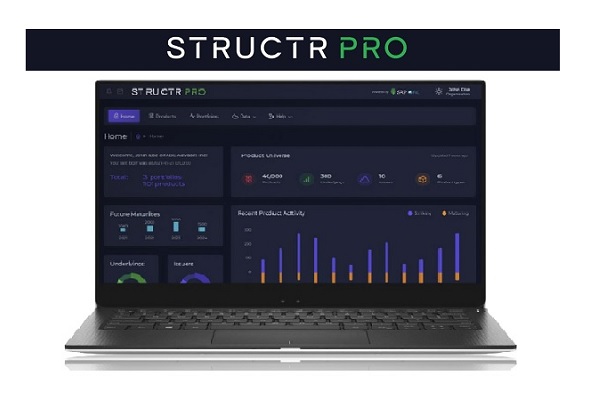On 8 November 2018, The European Supervisory Authorities (ESAs) published their proposed amendments to the PRIIPs regulation which can be found here
This consultation paper is inviting responses up until 6 December 2018, which is a rather short period compared to normal such time frames allowed but perhaps reasonable for an amendment paper rather than a fresh set of regulations.
Journey so far
Anyone who has followed the PRIIPs process over the last three years or more will know the difficult journey this landmark regulation has been on. Delayed by a year because of a dramatic rejection by the European parliament in 2016, PRIIPs came into force in January 2018.
The first few pages of this consultation highlight the current tangle of the process of this regulation. The delay in PRIIPs by one year (meaning the previously stated timetable for review has been reduced from two years of operation to one), the upcoming requirement to harmonise the Key Information Document (KID) with the UCITS regime, and for good measure the impact of European Parliament elections in the first half of 2019 mean that a four week consultation period has been offered for these amendments which will not come into effect until January 2020.
I have long held the opinion that regulatory timetables somehow have a simultaneous twin speed: fast yet slow. There can be no finer example than this one. In order to fix some of the fundamental problems of the PRIIPs framework any firm or other party needs to scramble quickly to formulate and communicate their views.
Scope of consultation
Section 4 contains the main items for amendment with the following paragraph:
The proposals also reflect the fact that the options identified to amend the methodology for future performance scenarios that would be feasible within the time constraints of this targeted review exercise, were considered to have drawbacks that outweigh the potential advantages. This analysis is without prejudice to other approaches that could be considered in a more comprehensive review of the PRIIPs framework, which is expected to be conducted in the coming years.
This makes it clear that the consultation will result in PRIIPs 1.1 rather than PRIIPs 2.0. This is consistent with what you might expect in the first year of a major new piece of regulation, and with such a limited time for replies. It is not however consistent with the widespread dissatisfaction expressed about many aspects of PRIIPs.
Main items for discussion
Performance scenarios
The performance scenarios have attracted a lot of controversy since their introduction and not surprisingly a lot of the consultation document focuses on them.
The first significant question discussed is that of the use of past performance (starting on page 12). The ESAs are now apparently in favour of including these, which would give some harmonisation with UCITS funds which will be woven into the PRIIPs framework in the next year or two.
Back-tested results do give some flavour of how products have performed and in the funds world they serve a useful function even though one must always apply the usual caveats of the past being no guide to the future.
This document acknowledges that not all types of products have simple back-tested data, structured products of course being one such asset class. The paper considers the conventional back-testing analysis often used by structured product providers. This is not entirely equivalent to fund back-testing but suitably explained I believe this is a very promising way to go.
The PRIIPs regulation does seek to set all investments on a level playing field which is a laudable aim but that does not always mean that every investment should be treated in exactly the same way in my opinion in all cases.
Scenarios anchored in the risk-free rate
One of the major objections to the current regulations is the way that performance scenarios are calculated. This is because they reference the last five years of data and keep the same mean of returns to power the simulations from which the various percentiles are drawn. This has always seemed a major weakness, particularly as the last five years have been extremely strong for most asset classes, and has led to some clearly overly optimistic results, such as unfavourable scenarios showing positive returns.
This in my view shows the problem that the performance scenarios have caused. For all its faults, back-testing is obvious in what it represents. However performance tables with concrete values laid out to show favourable, moderate and unfavourable scenarios with the same historic mean smuggled in “under the hood” actually has the greater power to seriously mislead.
The consultation document proposes consideration of anchoring the performance scenarios with the risk-free rate which would eliminate the problem of being reliant on the last five years’ performance.
Treatment of autocallables
Structured products occupy one of the four categories of investment in the PRIIPs regulation (the others being high risk and miscellaneous investments, funds and insurance products). As anyone with a cursory knowledge of structured products knows, autocallables account for up to half of most major structured products markets in Europe (and incidentally elsewhere). By their very nature autocallables have subtleties around the variable maturity property which affect their pricing, risk management and presentation of outcomes. The paragraph in the current consultation is the first time that autocallables have been acknowledged in any way in the entire RTS series over the last three years.
Proper harmonisation with the UCITS framework
This topic has been covered before by the RTS but in insufficient detail. The UCITS framework is the forerunner of the PRIIPs regulation for a section of the market, sharing many things such as a Key Investor Document concept, and a 1-7 scale risk rating. Harmonising or co-existing these two regimes should have been an important strategic aim of the PRIIPs RTS. A further omission is that fact that MIFID II gets zero mentions in a 48 page document at the end of the first year of these two key regulations being in force, which seems a little strange given the overlapping scope they have.
Other proposals or suggestions
- A more appropriate treatment of the market risk measure (MRM) for regular premium products
- Extending historical period to 10 years of data (increasing from the current 5 years)
- Changes to narrative in several places
Conclusion
This is a good opportunity for the industry to provide feedback in order that PRIIPs can be improved and better achieve its main goals in the long term.
Tags: Regulation PRIIPs














